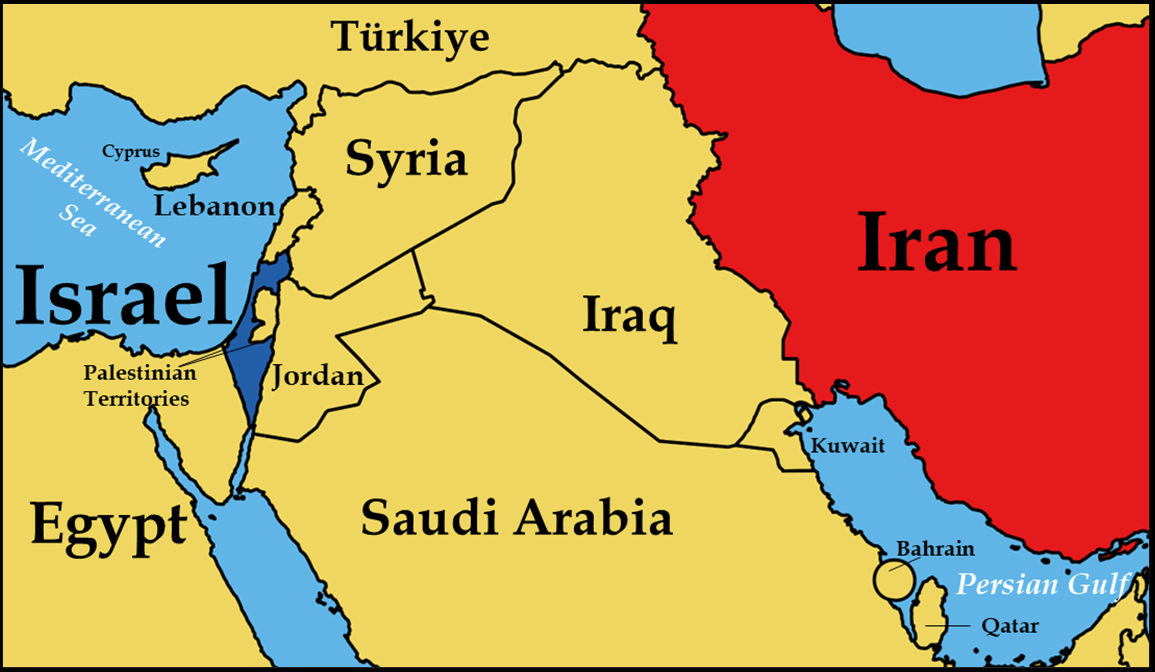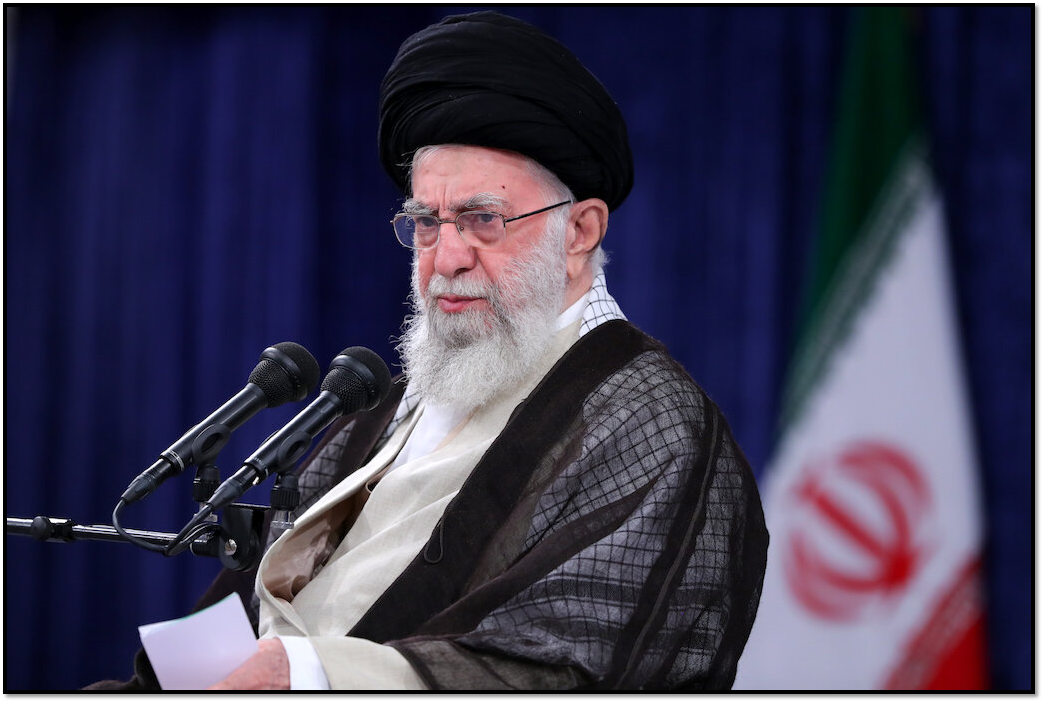Early Saturday morning in Tehran, Israel carried out what it called a series of “precise and targeted” airstrikes on Iranian military targets. This was the latest in a series of direct exchanges between Israel and Iran in recent months. Israel Defense Forces struck 20 sites, including air defense batteries and radar, factories for missile and drone production, and weapons and aircraft launch sites. Israeli Prime Minister Benjamin Netanyahu announced that the attack had "severely damaged Iran’s defense capability and its ability to produce missiles.” The Iranian government announced the deaths of four military personnel and one civilian, but otherwise took a more measured response than might be expected.

Over the course of a year, the crisis in the Middle East — which began with Hamas’ October 7 attack on Israel and Israel’s subsequent response — spread to Lebanon, Syria, Iran, Yemen and beyond. Israel’s strikes on Saturday on Tehran raises fears of escalating conflict between Israel and Iran.
USIP’s Robert Barron and Garrett Nada discuss Israel’s calculus taking this step, and the Islamic Republic’s considerations in its immediate response and larger strategy.
What led up to Israel’s strike on Iran, and what was Israel’s calculus?
Barron: The relationship between Israel and Iran has been characterized by vitriol and brinksmanship for decades. But the past year has raised the temperature to new heights. For more than a decade, Israel has warned against Iran’s sponsorship of groups across the Middle East — the so-called “Axis of Resistance” — which threaten Israel. Hamas’s attack on Israel on October 7 was enabled, in no small part, by Iran’s years of support for the group in weapons and resources. Iran’s support for Hezbollah in Lebanon, militia groups in Syria and Iraq, and the Houthis in Yemen have broadened the Islamic Republic’s reach significantly. From virtually the first day of the conflict, these groups have joined Hamas, to varying degrees, in its efforts against Israel, opening new fronts for Israel to contend with.
Israel and Iran-affiliated groups began clashing immediately after October 7. Months later, direct, open conflict between Iran and Israel crossed a new dangerous threshold that both sides had previously sought to avoid. On April 1, 2024, the IDF struck an Iranian consulate in Damascus, Syria, killing Islamic Revolutionary Guard Corps (IRGC) commander Major General Mohammad Reza Zahedi and his deputy. Two weeks later, Iran responded by launching 300 missiles and drones toward Israel, which were mostly foiled by a U.S.-led regional coalition. Following this tit-for-tat, the two sides seemed to feel the matter addressed, and returned to the pre-April 1 shadow war.
Over the summer, however, direct tensions ramped up again. On July 31, Hamas Politburo head Ismail Haniyyah was killed by an explosion in Tehran, which has been attributed to Israeli intelligence. This came just hours after the killing of a top Hezbollah commander in Beirut. Iran’s supreme leader promised “harsh punishment,” but a potential Israel-Hamas cease-fire agreement seemed to postpone Iran’s response. Weeks later, in September, Israel launched air offensive into Lebanon and killed Hezbollah’s leader, Hassan Nasrallah, and Abbas Nilforoushan, an IRGC general. on October 1, Iran launched approximately 180 ballistic missiles toward Israel in response. The world watched as massive escalation into a regional war seemed imminent.
How Israel would respond to the October 1 missile launch has been the subject of speculation for weeks. A concern of many — including the Biden administration — was that Israel’s response would further escalate the region’s crises, drawing an even larger Iranian retaliation, leading to a subsequent Israeli counterattack, and so on. Israel’s attack on Iranian facilities Saturday morning seemed (at least to some) to take these concerns into account. Israel did not attack nuclear or energy facilities or Iranian leadership. The strikes were outside of highly populated areas, avoiding significant civilian casualties. Similar to past rounds, both sides may be able to claim a win and stand down.
Still, while Israel’s operation in Iran was arguably more measured than it could have been, the Israeli leadership no doubt views the strike as accomplishing two key goals: 1) creating vulnerabilities in Iran’s defense missile and drone capacities, useful in the case of future Israeli airstrikes; and 2) as a message to Iranian leadership that Israel has the capacity and reach to do major damage should it choose to, or in the event of a larger war. The operation was the first publicly acknowledged direct operation by Israel in Iran. Thus, beyond the weaknesses created by the strike, Israel’s operation can also be read as an effort to deter. Whether that will be the result and whether a path toward de-escalation can be established remains to be seen.
What was Iran’s initial response, and how might it weigh whether to respond with a counterstrike?
Nada: Iran’s military downplayed the extent of Israel’s attack and claimed, without evidence, that air defenses repelled Israeli aircraft and intercepted missiles. "Enemy planes were prevented from entering the country's airspace ... and the attack caused limited damage," the military joint staff said in a statement. Iran acknowledged that military bases in Tehran, Khuzestan and Ilam provinces, including radar sites, were hit but did not provide details. It also announced the death of four soldiers from its conventional army, the Artesh. The military’s statement hinted that Iran could show restraint if a “lasting cease-fire” were implemented in the Gaza Strip and Lebanon.
Iran may appear weak if it does not launch a counterstrike, but Tehran may be unwilling to risk a more damaging Israeli response.
Reactions from Iranian leaders were relatively muted. They reserved the right to respond but did not explicitly pledge to strike back at Israel, as they had after previous attacks. Supreme Leader Ayatollah Ali Khamenei, who has the final say on all matters of state, warned that the strike should not be downplayed and that Israel’s “miscalculations must be stopped.” But he deferred to others on determining the response. “Of course, our officials should be the ones to assess and precisely apprehend what needs to be done and do whatever is in the best interest of this country and nation,” he said.

Iran may appear weak if it does not launch a counterstrike, but Tehran may be unwilling to risk a more damaging Israeli response. Israel reportedly targeted air defense batteries, which could leave Iran even more vulnerable to attacks. Israel appeared to adhere to U.S. guidance against targeting Iranian oil or nuclear facilities but may not necessarily show such restraint again. An attack on oil facilities could be a significant blow to Iran’s economy, already weakened by years of U.S. sanctions.
Also, Iran may need to think twice about using its remaining ballistic missiles. Israeli warplanes reportedly destroyed mixers used to produce missile fuel that could take a year or more to remanufacture. Tehran can scarcely afford to get into a tit-for-tat exchange of missiles without the ability to replenish its stocks.
Another option for Tehran would be to respond indirectly through its network of allies and proxies, including Hezbollah and the Houthis. But this option also has pitfalls. Some of the militias in Iran’s so-called “Axis of Resistance” have faced significant losses since October 2023, including the killing of senior Hezbollah and Hamas leaders. Continued escalation could weaken the militias and their remaining capacity to deter Israel.
Tehran may prefer to isolate Israel using diplomacy. Earlier in October, Foreign Minister Seyed Abbas Araghchi went on a tour to several Arab countries, including Bahrain, Egypt, Jordan, Iraq, Kuwait, Oman, Qatar and Saudi Arabia, in a bid to strengthen ties with other regional players and ease tensions while marginalizing Israel.
How might Israel’s latest strike impact Iran’s strategic calculus?
Nada: Iran may consider alternatives to its “ring of fire” strategy to counter Israel given that Hezbollah and other militia allies have failed to deter strikes on Iranian soil. Developing nuclear weapons could be one option for reestablishing deterrence. “We have no decision to build a nuclear bomb but should Iran’s existence be threatened, there will be no choice but to change our military doctrine,” Kamal Kharrazi, an adviser to Supreme Leader Khamenei, warned in May. Hardliners in parliament have increasingly echoed Kharrazi.
As of mid-2024, Iran could produce enough highly enriched uranium to fuel one nuclear bomb in as little as one or two weeks. But Tehran would need several months or more than a year to assemble a warhead and marry it to a delivery system, such as a ballistic missile.
